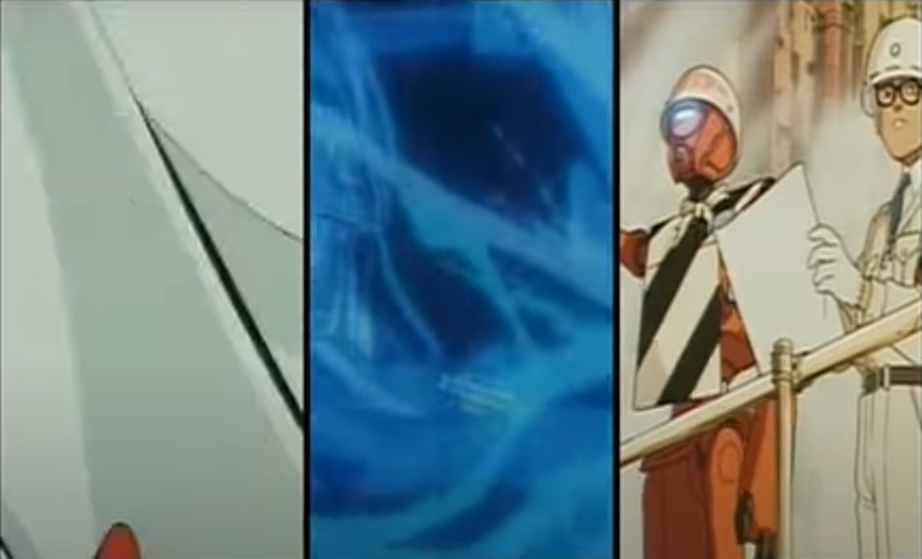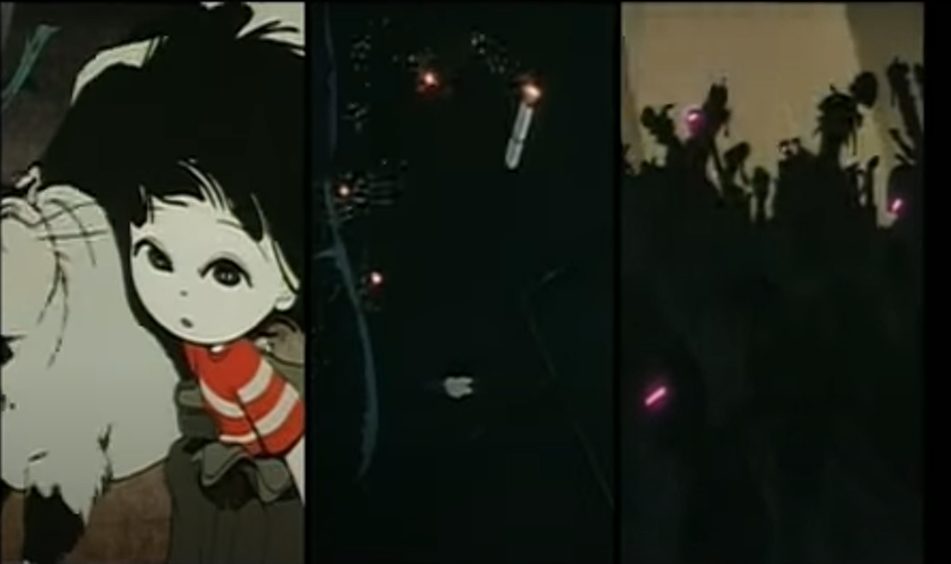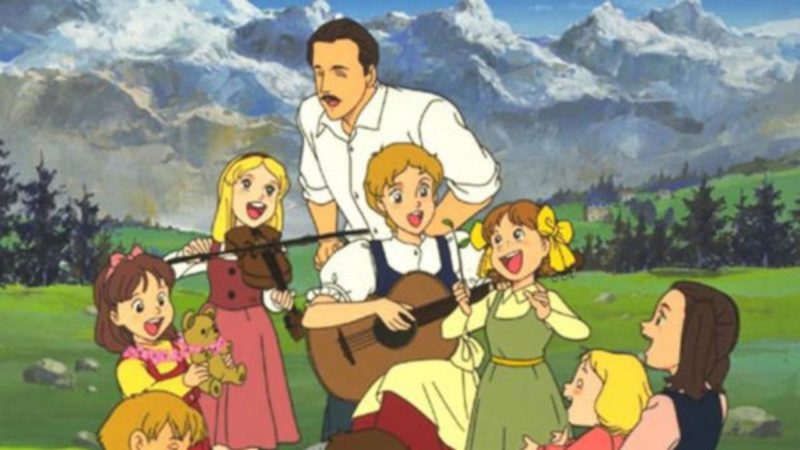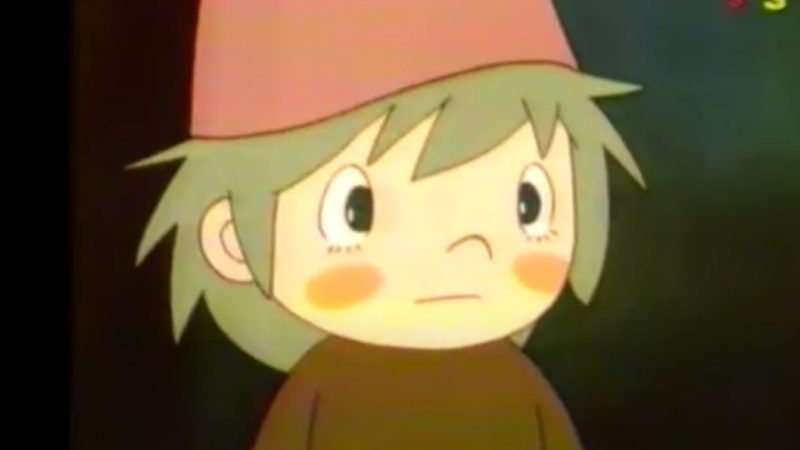Manie-Manie - Tales from the Labyrinth - the 1987 animated film

Manie-Manie - The tales of the labyrinth (in the Japanese original: Manie-Manie 迷宮 物語, Manie Manie Meikyû monogatari) Also known as New Tokyo is a 1987 Japanese science fiction animated (anime) film produced by Project Team Argos and Madhouse. Conceived and produced by the founders of Madhouse Masao Maruyama and Rintaro, it adapts the short stories by Taku Mayumura present in the 1986 collection with the same Japanese title and is produced by the publisher Haruki Kadokawa.
The 50-minute film has three segments, each with a different screenwriter and director: Rintaro's "Labyrinth Labyrinthos", an exploration into the labyrinth of a little girl's mind, Yoshiaki Kawajiri's "Running Man", centered around a deadly motor racing, and Katsuhiro Ōtomo's "Construction Cancellation Order," a cautionary tale about man's dependence on technology. In addition to the original music of Godiego's Mickie Yoshino, two prominent pieces of Western classical music are featured in the foreground: the first of Erik Satie's Gymnopédies and the "Toreador Song" of Georges Bizet's Carmen in "Labyrinth" and "Morning Mood" ”By Edvard Grieg's Peer Gynt scoring, ironically, on“ The Order ”.
The film premiered on September 25, 1987, at that year's Tōkyō International Fantastic Film Festival. In addition to the festival screenings, Japanese distributor Toho originally relegated the film directly to video, releasing a VHS on October 10, 1987, but ultimately gave it a general theatrical release in Japan on April 15, 1989. In English, the film was licensed, dubbed and released theatrically (as a double feature with the first Silent Möbius film) and on VHS in North America by Streamline Pictures, the license was later taken over by ADV Films, now also out of business . [
Stories
Labyrinth

The short follows Sachi (Hideko Yoshida / Cheryl Chase), a little girl playing hide and seek with her cat Cicero. Her search leads her to an old long-case watch that also serves as a gateway to a maze world. The world is filled with oddities and supernatural characters, such as cardboard working class citizens, an invisible dog, a train driven by skeletons, and a strange circus. Eventually, Sachi and Cicero arrive at a circus tent where a viewing screen is displayed, leading to the following segments.
The running man (Hashiru otoko)



Zack Hugh (Banjō Ginga) is the “Running Man” owner, the undefeated champion of the “Death Circus” racing circuit and has been racing for 10 years. Competitors race on high-speed boats similar to Formula 1 and spectators are betting on the lives of these people for huge payouts. A Marlowe-style reporter (Masane Tsukayama / Michael McConnohie) is sent to interview the mysterious Zack off the track and witness one of his races. He soon discovers that Hugh has telekinetic abilities which he uses to destroy the other pilots, after silently observing him in the dark, chronically using a training interface within his penthouse. When the race ends in his favor, the monitors in the pits display “LIFE FUNCTIONS ENDED”. Mysteriously, though apparently dead, Hugh continues around the track and is overtaken by a ghostly runner. He tries to employ the same strategy, striving to destroy the opponent, but in truth it is against his own mind. The force of telekinesis is directed inward, which quickly tears apart both Hugh and his car. The Circus of Death was permanently closed later on; the reporter believed that the real attraction of the event was the need for viewers to see how long Hugh could beat death.
Stop the works! (Koji chushi meirei)



A revolution in the imaginary South American country of the Republic of Aloana led to the establishment of a new government; this new government refuses to accept a contract detailing the construction of plant 444. The company responsible for the construction has started to lose millions, so hired Tsutomu Sugioka (Yū Mizushima / Robert Axelrod) is sent to stop production. The work is fully automated, done by robots programmed to finish the job regardless of the consequences and guided by a robot identified as 444-1 (Hiroshi Ōtake / Jeff Winkless). Witnessing the destruction of several robots and Robot 444-1's refusal to cease operations, Tsutomu begins to lose his temper and is nearly killed by 444-1 who has been programmed to eliminate anything that poses a threat to the project. He retaliates by destroying 444-1 and follows his power cable to the robots' power source in an attempt to permanently end production. Unbeknownst to Tsutomu, the old government was restored and they agreed to honor the contract once again.
Production
Labyrinth
Labyrinth (ラ ビ リ ン ス * ラ ビ リ ン ト ス, Rabirinsu Rabirintosu) is written and directed by Rintaro, with character design and animation direction by Atsuko Fukushima, key animation by Manabu Ōhashi, Reiko Kurihara and Fukushamako, and art direction by Yikhawa . It serves as the "high-level" story of the anthology, a framing device that leads to the other two works.
The running man (Hashiru otoko)
The Running Man (走 る 男, Hashiru Otoko) is written for the screen and directed by Yoshiaki Kawajiri, with character design and animation direction by Kawajiri, mechanical design by Takashi Watabe and Satoshi Kumagai, key animation by Shinji Otsuka, Nobumasa Shinkawa, Toshio Kawaguchi and Kengo Inagaki and the artistic direction of Katsushi Aoki. The segment also appeared in Liquid Television episode 205 with a different voice actor, Rafael Ferrer, compared to the dub of Michael McConnohie's Streamline.
Stop the works! (Koji chushi meirei)
Also known as Construction Cancellation Order (工事 中止 命令, Kōji Chūshi Meirei) is written for the screen and directed by Katsuhiro Ōtomo, with character design by Ōtomo, animation direction by Takashi Nakamura, key animation by Kōji Morimoto, Nakamura, Ōtomo and Kunihiko Sakurai and the artistic direction of Takamura Mukuo. The portrayal of this segment of South America as a dangerous and unstable place is comparable to other representations of Japanese media in the 80s, such as Osamu Tezuka's 1987 Gringo comic.
Technical data
Original title Manie Manie Meikyû monogatari
Original language Japanese
Country of Production Japan
Year 1987
Duration 50 min
Relationship 1,85:1
Gender animation, fantastic, science fiction
Regia Rintarō, Yoshiaki Kawajiri, Katsuhiro Ōtomo
Producer Haruki Kadokawa
Music Micky Yoshino
Italian voice actors
Tosawi Piovani as Shojo Sachi
Luca Bottale: Cicero
Patrizia Salmoiraghi: mom
Marco PaganiZach Hugh
Massimiliano Lotti: reporter
Simone D'Andrea: Tsutomu Sugioka
Daniele Demma: chief robot
Marco Balzarotti: supervisor
Source: https://en.wikipedia.org/






